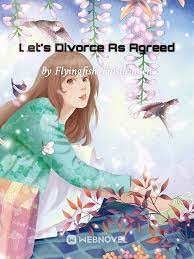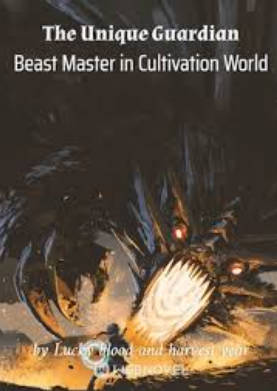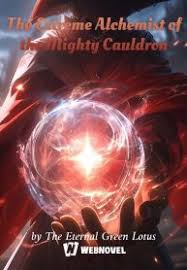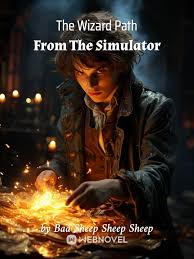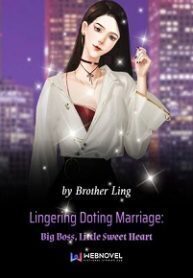Volume 2 - CH 2
P. 47
P. 56
“How interesting. I would love to have a taste.”
There’s nothing interesting about it. He’s talks about it like it’s some unfamiliar food from a foreign country.
Lydia scrunched her brows slightly together.
Edgar smiled to her as she was glowering at him and chose to purposefully sit down right next to her. Even to go as far as to grabbing Nico, who was sitting in that spot, by the fur on his neck and moving him.
Nico made a threatening posture by raising the hair on his back and didn’t spare to throw invective words at him, but that must have only sounded like a cat was hissing and snarling at him.
“I see, it has a curious taste,” remarked Edgar once he took a bite of a biscuit.
“You’re fine to just say you don't like it.”
“It’s just like you, once I have a taste, I crave for more.”
Carlton cleared his throat in an obvious cough.
“By the way, Professor, I happened to read your newest article the other day."
Edgar swiftly changed the topic by turning his attention and making a serious look at Carlton.
“Oh, so you have an interest in natural history.”
“Nature is profound the more you delve into it. The word incredible was made for the study of natural history as it always astounds me. I particularly enjoyed reading the part about your analysis on crystal structure.”
P. 57
Once he’d open his mouth, it was easy for him to grab Carlton’s attention. He acted like a humble young student asking for answers from his teacher, but also managed to give back smart replies and ask questions that were right on the mark to liven the conversation.
It seems like it wasn't only women that Edgar had an art in winning over. Most likely, he knew the most accurate way to present himself in order to win the favor of any type of person.
It may have been natural for someone like him who knew how to get on in the harsh, real world successfully, as he really did seem to have read the article, and he had hit the right buttons to gain the favor of her father, who even she thought was obsessed with his own field research.
Now, father, you really shouldn’t open up to him like that, was what she wanted to say from watching the two of them.
“By the way, Professor, I happened to come across some old documents on this subject, it said that there is a stone called the “fairy’s egg” or something like that.”
Lydia was drawn into the men’s conversation at the new subject brought up by Edgar.
Talking about fairy’s egg, there was one involved in the case of the disappeared baron daughter. A case that Edgar was suspiciously involved in.
“Why, yes, there indeed exists a stone with that name.”
“Father, is that fairy egg real?”
“It’s only a mineral. It has that romantic name, but it’s only just a rare agate stone.”
“An agate, like that?”
There was an agate gemstone the size of a child’s head on display in the cabinet along with various other colorful stones.
Carlton stood up and took that large gemstone out of the cabinet and placed it on the table.
P. 58
The outer surface of the stone only appeared like a black, coarse rock. But, one wouldn’t be able to imagine that it was hiding a multi-colored stripped pattern stone on the inside.
“When you look at it like this, it looks like there is an agate trapped in a rocky egg. Only after you crack the shell are you able to see what’s inside.”
Edgar curiously stared at the agate on top of the table which had already been split open in two to reveal the sparkling crystal layers in the cross-section of the agate.
“But, the agate that’s called the fairy egg isn’t a stone like this, is it?”
“The name that was given to those certain type of agates are proper nouns. It isn’t related to its species. According to literature, it is a beautiful milky-white stone that has a green pattern on it. That coloration is a rare one called ‘peppermint leaf,’ and the ‘fairy egg’ is an agate with water trapped inside it.
“An agate with water in it?”
Although it was Edgar who started this topic, Lydia was the one actively asking the questions, probably because Edgar must have already looked up what a ‘water-sealed agate’ was.
“When you look at an agate gemstone, you can see how there is a open cave in the center of the stone, right? There are rare cases when water is trapped inside this. But if you cut it in two like this, you can’t checked if there is water. Because it evaporates in the instant you crack it.”
“Then how can you make sure that there is water in it?”
P. 59
“When you shake it, you can hear the water in it. If you find a stone like that, you carve off the exterior slowly. When you get near the center of the stone, you can transparently see the center of it. There will be the ancient water swaying back and forth that had been hidden asleep within the deep earth for hundreds and thousands of years.”
Imagining that, Lydia let out a sigh. She wondered how the light would look when the first ray of sunlight had reached its center and shined through the color of the agate that was probably like thin frosted glass.
“Most likely, the 'fairy egg' name came from the peppermint coloration that covers it like the veins of a leaf and the water was compared to a mysterious, imaginary creature.”
“But, father, if it was a rare agate stone like that, then there could have been a chance that a fairy had sneaked into it.”
Langley, who was the only one not familiar with this side of the family, made a puzzled look from Lydia’s bizarre comment.
“Fairies love beautiful things, and doesn’t that mean that the water trapped inside the agate was the divine holy water from the six days of Creation? That would be enough to lure any faerie and captivate them. And gems are stones that absorb light and trap them within them. They even have the power to withhold magic. If a fairy were to enter one, they wouldn’t be able to escape.”
“There indeed are records that they were used for that purpose. I’m not sure about other agate stones that have water in them, but if I were to only say about ‘fairy eggs,’ then there anecdote stories about sealing harmful evil spirits in them.”
“Then, those stones that are called fairy eggs, are there some that still exist?” asked Edgar.
P. 60
“There may be. I have read there was a record one existed in an abbey in Canterbury somewhere around the 16th century. There is no record of any after that.”
After hearing all of this, Lydia became puzzled about something.
“But, Edgar, doesn’t the fairy egg fortune-telling game, that’s popular among the young ladies, use a glass ball instead of an agate?”
P. 56
“How interesting. I would love to have a taste.”
There’s nothing interesting about it. He’s talks about it like it’s some unfamiliar food from a foreign country.
Lydia scrunched her brows slightly together.
Edgar smiled to her as she was glowering at him and chose to purposefully sit down right next to her. Even to go as far as to grabbing Nico, who was sitting in that spot, by the fur on his neck and moving him.
Nico made a threatening posture by raising the hair on his back and didn’t spare to throw invective words at him, but that must have only sounded like a cat was hissing and snarling at him.
“I see, it has a curious taste,” remarked Edgar once he took a bite of a biscuit.
“You’re fine to just say you don't like it.”
“It’s just like you, once I have a taste, I crave for more.”
Carlton cleared his throat in an obvious cough.
“By the way, Professor, I happened to read your newest article the other day."
Edgar swiftly changed the topic by turning his attention and making a serious look at Carlton.
“Oh, so you have an interest in natural history.”
“Nature is profound the more you delve into it. The word incredible was made for the study of natural history as it always astounds me. I particularly enjoyed reading the part about your analysis on crystal structure.”
P. 57
Once he’d open his mouth, it was easy for him to grab Carlton’s attention. He acted like a humble young student asking for answers from his teacher, but also managed to give back smart replies and ask questions that were right on the mark to liven the conversation.
It seems like it wasn't only women that Edgar had an art in winning over. Most likely, he knew the most accurate way to present himself in order to win the favor of any type of person.
It may have been natural for someone like him who knew how to get on in the harsh, real world successfully, as he really did seem to have read the article, and he had hit the right buttons to gain the favor of her father, who even she thought was obsessed with his own field research.
Now, father, you really shouldn’t open up to him like that, was what she wanted to say from watching the two of them.
“By the way, Professor, I happened to come across some old documents on this subject, it said that there is a stone called the “fairy’s egg” or something like that.”
Lydia was drawn into the men’s conversation at the new subject brought up by Edgar.
Talking about fairy’s egg, there was one involved in the case of the disappeared baron daughter. A case that Edgar was suspiciously involved in.
“Why, yes, there indeed exists a stone with that name.”
“Father, is that fairy egg real?”
“It’s only a mineral. It has that romantic name, but it’s only just a rare agate stone.”
“An agate, like that?”
There was an agate gemstone the size of a child’s head on display in the cabinet along with various other colorful stones.
Carlton stood up and took that large gemstone out of the cabinet and placed it on the table.
P. 58
The outer surface of the stone only appeared like a black, coarse rock. But, one wouldn’t be able to imagine that it was hiding a multi-colored stripped pattern stone on the inside.
“When you look at it like this, it looks like there is an agate trapped in a rocky egg. Only after you crack the shell are you able to see what’s inside.”
Edgar curiously stared at the agate on top of the table which had already been split open in two to reveal the sparkling crystal layers in the cross-section of the agate.
“But, the agate that’s called the fairy egg isn’t a stone like this, is it?”
“The name that was given to those certain type of agates are proper nouns. It isn’t related to its species. According to literature, it is a beautiful milky-white stone that has a green pattern on it. That coloration is a rare one called ‘peppermint leaf,’ and the ‘fairy egg’ is an agate with water trapped inside it.
“An agate with water in it?”
Although it was Edgar who started this topic, Lydia was the one actively asking the questions, probably because Edgar must have already looked up what a ‘water-sealed agate’ was.
“When you look at an agate gemstone, you can see how there is a open cave in the center of the stone, right? There are rare cases when water is trapped inside this. But if you cut it in two like this, you can’t checked if there is water. Because it evaporates in the instant you crack it.”
“Then how can you make sure that there is water in it?”
P. 59
“When you shake it, you can hear the water in it. If you find a stone like that, you carve off the exterior slowly. When you get near the center of the stone, you can transparently see the center of it. There will be the ancient water swaying back and forth that had been hidden asleep within the deep earth for hundreds and thousands of years.”
Imagining that, Lydia let out a sigh. She wondered how the light would look when the first ray of sunlight had reached its center and shined through the color of the agate that was probably like thin frosted glass.
“Most likely, the 'fairy egg' name came from the peppermint coloration that covers it like the veins of a leaf and the water was compared to a mysterious, imaginary creature.”
“But, father, if it was a rare agate stone like that, then there could have been a chance that a fairy had sneaked into it.”
Langley, who was the only one not familiar with this side of the family, made a puzzled look from Lydia’s bizarre comment.
“Fairies love beautiful things, and doesn’t that mean that the water trapped inside the agate was the divine holy water from the six days of Creation? That would be enough to lure any faerie and captivate them. And gems are stones that absorb light and trap them within them. They even have the power to withhold magic. If a fairy were to enter one, they wouldn’t be able to escape.”
“There indeed are records that they were used for that purpose. I’m not sure about other agate stones that have water in them, but if I were to only say about ‘fairy eggs,’ then there anecdote stories about sealing harmful evil spirits in them.”
“Then, those stones that are called fairy eggs, are there some that still exist?” asked Edgar.
P. 60
“There may be. I have read there was a record one existed in an abbey in Canterbury somewhere around the 16th century. There is no record of any after that.”
After hearing all of this, Lydia became puzzled about something.
“But, Edgar, doesn’t the fairy egg fortune-telling game, that’s popular among the young ladies, use a glass ball instead of an agate?”
